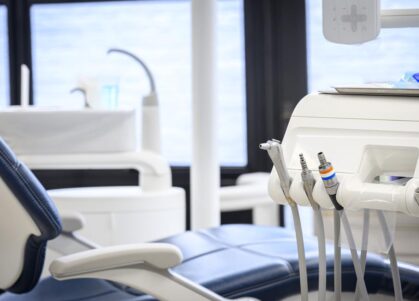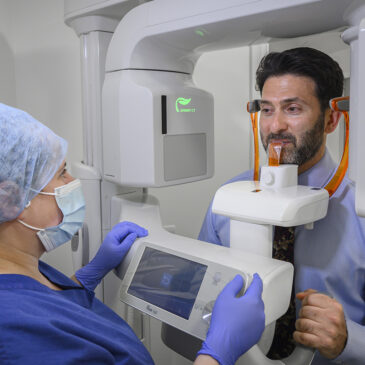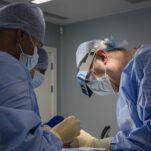Treatment & Procedure
Initial Treatment
If surgical intervention is required, it is almost always performed as a day procedure in our in-house facility and can be arranged promptly.
Anaesthesia and Comfort
Most patients undergo general anaesthesia, ensuring they are asleep throughout the procedure and have no memory of it. While under anaesthetic, a local anaesthetic is also administered to numb the area and minimise discomfort upon waking.
Surgical Procedure
During surgery, your surgeon will access the impacted tooth by carefully lifting the gum and, in some cases, removing a small portion of the surrounding bone.
A gold bracket and chain may be attached to the buried canine tooth, a technique that supports later orthodontic treatment.
Alternatively, a healing dressing, such as a gauze, pink paste dressing, or a custom-made dressing plate, may be applied. This creates a small “window” in the gum above the impacted canine, allowing for controlled healing.
Post-Surgical Healing
The dressing may be secured with stitches, aiding healing while maintaining access for your orthodontist. This step is crucial in ensuring the tooth can be realigned, preventing future complications.
Ongoing Solutions
Following surgery, treatment is usually continued by an orthodontist. At our Harley Street clinic, this process remains in-house, with both a consultant maxillofacial surgeon and a specialist orthodontist available on-site.
Recovery and Orthodontic Treatment
By this stage, any post-surgical discomfort should have subsided, and the dissolvable stitches will have disappeared naturally. If a gold bracket and chain were placed during surgery, any temporary stitches securing the chain will be removed by your orthodontist.
The attached chain will be connected to braces and adjusted over time, depending on the stage of treatment. The realignment process typically takes several months, but the results can be truly transformative.
Complex Cases and Alternative Treatments
In more complex cases, alternative approaches, such as repositioning the tooth through transplantation, may be considered. However, for most patients, a combination of initial surgery and orthodontic care will successfully restore a natural, well-aligned smile.


